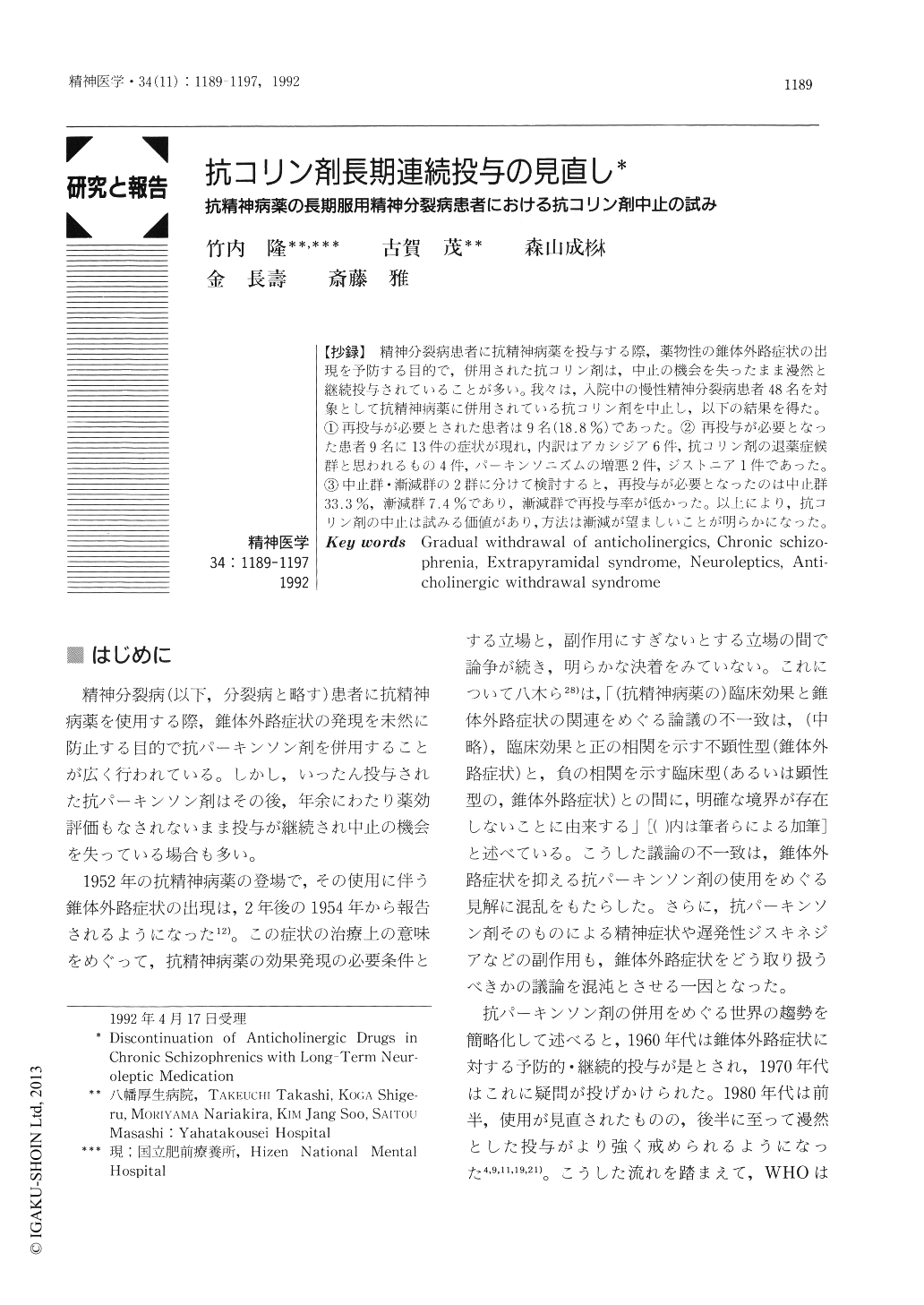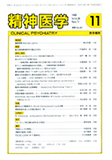Japanese
English
- 有料閲覧
- Abstract 文献概要
- 1ページ目 Look Inside
【抄録】 精神分裂病患者に抗精神病薬を投与する際,薬物性の錐体外路症状の出現を予防する目的で,併用された抗コリン剤は,中止の機会を失ったまま漫然と継続投与されていることが多い。我々は,入院中の慢性精神分裂病患者48名を対象として抗精神病薬に併用されている抗コリン剤を中止し,以下の結果を得た。①再投与が必要とされた患者は9名(18.8%)であった。②再投与が必要となった患者9名に13件の症状が現れ,内訳はアカシジア6件,抗コリン剤の退薬症候群と思われるもの4件,パーキンソニズムの増悪2件,ジストニア1件であった。③中止群・漸減群の2群に分けて検討すると,再投与が必要となったのは中止群33.3%,漸減群7.4%であり,漸減群で再投与率が低かった。以上により,抗コリン剤の中止は試みる価値があり,方法は漸減が望ましいことが明らかになった。
Many studies on the withdrawal of anticholinergics (AC) from patients treated together with neuroleptics have been conducted. Some of the results suggest that AC should be prescribed only when Extrapyramidal Symptoms (EPS) occur. Other results indicate the need for continuous use of AC. However, all of the studies except for probably one followed the same method-abrupt withdrawal. The present study has also adopted a gradual withdrawal method, and reveals that continuous AC use is not necessary. The study included 48 chronic schizophrenic in-patients (female 22, male 26, average age 45.7) , receiving both neuroleptics and AC for more than six months. Patients who had shown nervousness in drug switch were excluded beforehand. 21 (female 11, male 10) of the 48 patients withdrew from AC abruptly, and the remaining 27 patients (female 11, male 16) withdrew gradually. 1 weeks to 12 weeks were needed for the gradual withdrawal. Observation was carried on from 10 to 40 weeks after the withdrawal. As a result, 7 patients in the former group (33.3%), and 2 patients in the latter (7.4%) returned to AC medication.This showed a statistically significant difference (p<0.05). In these 9 patients, 13 symptoms which necessitated AC prescription were found. They were akathisia (4), anticholinergic withdrawal syndrome (3) , deterioration of parkinsonism (2), and dystonia (1) in the abrupt withdrawal group. In the gradual withdrawal groups, they were akathisia (2), and anticholinergic withdrawal syndrome (1). It is suggested that AC should be withdrawn gradually, mainly because this method prevents the occurrence of symptoms of cholinergic rebound.

Copyright © 1992, Igaku-Shoin Ltd. All rights reserved.


